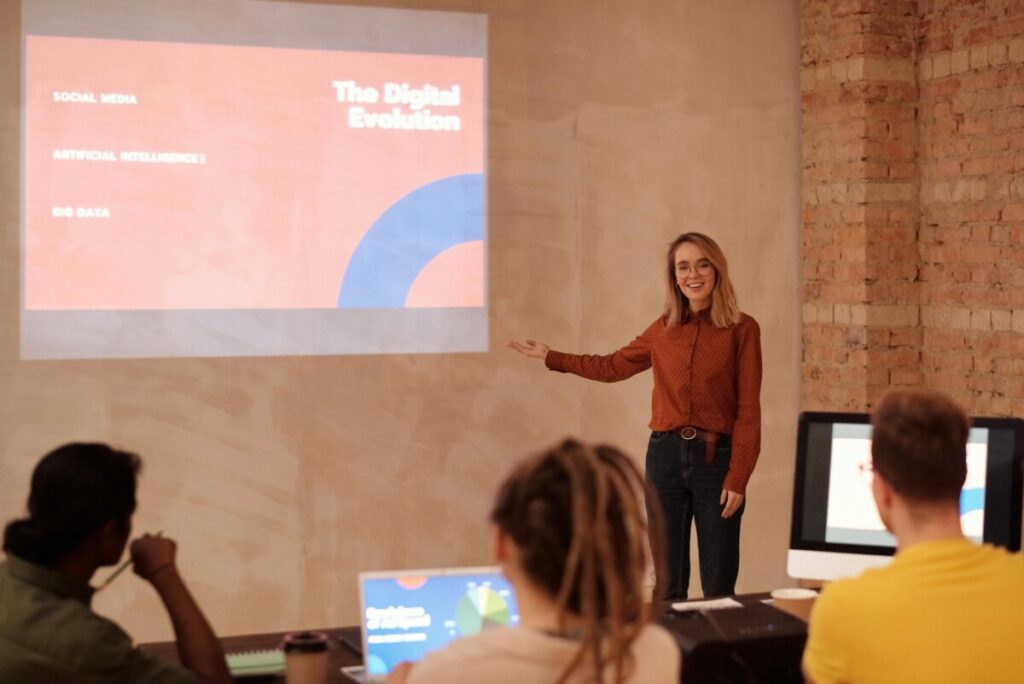Strategies for Leadership Flexibility

In today’s dynamic and fast-paced world, leadership flexibility has become more crucial than ever. As markets change, technologies advance, and employee expectations evolve, leaders must be able to adapt and navigate these shifts with agility and grace. In this article, we will explore what leadership flexibility is, why it is important, and strategies for developing this essential skill.
What is Leadership Flexibility?
Leadership flexibility can be defined as the ability to adapt one’s leadership style and approach in response to different situations, individuals, and contexts. It involves being open-minded, adaptable, and willing to try new approaches as needed. Rather than relying on a one-size-fits-all approach, flexible leaders tailor their strategies to effectively meet the needs of their team and organization.
At its core, leadership flexibility is about finding the right balance between consistency and adaptability. It means being able to maintain a strong foundation of leadership principles while also being flexible enough to adjust and pivot when necessary.
Benefits of Leadership Flexibility
Leadership flexibility offers numerous benefits for both leaders and their teams.
By embracing flexibility, leaders can:
Build stronger relationships: Flexibility allows leaders to connect with their team members on an individual level, understand their unique strengths, motivations, and needs, and create an environment where everyone feels valued and supported.
Increase innovation and creativity: Flexible leaders encourage and embrace new ideas, providing space for experimentation and creative problem-solving. This fosters a culture of innovation and inspires team members to think outside the box and come up with novel solutions.
Navigate change and uncertainty: In today’s ever-changing business landscape, leaders who are flexible can navigate uncertainty and adapt to new challenges more effectively. They are able to inspire confidence and help their teams navigate through transitions and changes with resilience and grace.
Promote employee engagement and satisfaction: When leaders demonstrate flexibility, they create an environment where employees feel empowered, trusted, and valued. This leads to higher levels of engagement, job satisfaction, and ultimately, retention.
The Role of Leadership Flexibility in a Changing World
As the world becomes increasingly complex and interconnected, leadership flexibility has become a vital skill for navigating and thriving in a rapidly changing landscape. Traditional hierarchical structures are giving way to more fluid and adaptable models, and leaders must be able to embrace and leverage these shifts to remain relevant and effective.
In a changing world, leadership flexibility enables leaders to:
Respond to market disruptions: Rapid technological advancements and market disruptions require leaders to quickly adapt their strategies and processes. Flexible leaders can anticipate and respond to these changes, ensuring the organization remains resilient and competitive.
Manage diverse teams: Diversity in the workplace has become the norm, with teams consisting of individuals from different generations, cultures, and backgrounds. Leadership flexibility enables leaders to understand and appreciate these diverse perspectives, fostering inclusion and harnessing the collective talents of their team members.
Drive organizational agility: Flexibility is a key driver of organizational agility, which is the ability to respond and adapt to change with speed and effectiveness. Flexible leaders can create a culture of agility, empowering their teams to be nimble, learn from failures, and continuously improve.
Embrace emerging technologies: As new technologies emerge, leaders must be open to adopting and leveraging them to drive innovation and productivity. Leadership flexibility allows leaders to embrace emerging technologies and guide their teams in harnessing their potential.
Strategies for Developing Leadership Flexibility
Now that we understand the importance of leadership flexibility, let’s explore some strategies for developing this essential skill.
1. Embrace Change and Adaptability
To cultivate a mindset of embracing change, leaders can:
Stay open-minded: Leaders should actively seek out diverse perspectives and be willing to challenge their own assumptions and beliefs.
Encourage experimentation and learning: Leaders can create a safe environment where failure is seen as an opportunity for growth, encouraging team members to take risks and learn from their experiences.
Lead by example: Leaders should model adaptability by being open to new ideas, embracing change, and demonstrating a willingness to learn and grow.
2. Foster Open Communication and Collaboration
To foster open communication and collaboration, leaders can:
Create psychological safety: Leaders should create an environment where team members feel safe to express their ideas, ask questions, and provide feedback without fear of judgment or retribution.
Promote active listening: Leaders should practice active listening, seeking to understand the perspectives and concerns of their team members. This helps create a culture of open communication and mutual respect.
Encourage collaboration: Leaders can create opportunities for cross-functional collaboration, where team members can share ideas, leverage each other’s strengths, and work towards common goals.
3. Cultivate Self-Awareness and Emotional Intelligence
To cultivate self-awareness and emotional intelligence, leaders can:
Engage in introspection: Leaders should regularly reflect on their own behavior, emotions, and reactions, and consider the impact of their actions on others. This self-reflection can help them identify areas for improvement and enhance their emotional intelligence.
Seek feedback: Leaders should actively seek feedback from their team members, peers, and mentors to gain insights into their strengths and areas for growth. This feedback can help them develop greater self-awareness and refine their leadership style.
Invest in personal development: Leaders can attend workshops, and seminars, or engage in coaching to enhance their emotional intelligence, self-awareness, and interpersonal skills.
4. Encourage Continuous Learning and Growth
To encourage continuous learning and growth, leaders can:
Promote a learning culture: Leaders should encourage and support ongoing learning and professional development for themselves and their team members. This can be done through providing resources, training opportunities, and recognition of learning achievements.
Set learning goals: Leaders should set specific learning goals for themselves and their team members and regularly review progress towards these goals. This helps foster a culture of continuous improvement and growth.
Provide constructive feedback: Leaders should provide regular feedback to their team members, highlighting areas for improvement and offering support and guidance to help them develop their skills and knowledge.
5. Empower and Delegate Responsibilities
To empower and delegate responsibilities, leaders can:
Trust their team: Leaders should trust their team members’ abilities and provide them with autonomy and authority to make decisions and take ownership of their work.
Clearly communicate expectations: Leaders should clearly communicate their expectations, goals, and objectives to their team members, ensuring everyone understands their roles and responsibilities.
Offer support and resources: Leaders should provide the necessary support, resources, and guidance to enable their team members to succeed in their delegated responsibilities. This includes providing training, mentoring, and timely feedback.
By embracing these strategies, leaders can develop their flexibility and adaptability. Enabling them to lead their teams and organizations more effectively in this ever-changing world.
The Impact of Leadership Flexibility on Team Performance and Engagement
When leaders exhibit flexibility, it has a profound impact on team performance and engagement.
Here are some key outcomes:
Increased trust and loyalty: When leaders are flexible and adaptive, it builds trust among team members. They feel supported and valued, which fosters loyalty and commitment to the organization.
Enhanced problem-solving and innovation: Flexible leaders encourage creativity and innovative thinking within their teams. This leads to more effective problem-solving and the generation of fresh ideas and solutions.
Improved morale and motivation: By demonstrating flexibility, leaders create a positive and empowering work environment. This boosts team morale and motivation, resulting in higher levels of productivity and engagement.
Heightened resilience and adaptability: Flexible leaders inspire their teams to embrace change and remain agile. This cultivates a culture of resilience and adaptability, enabling the team to navigate challenges and seize opportunities with confidence.
The impact of leadership flexibility transcends individual team members and extends to the overall success and performance of the organization.
Best Practices for Maintaining Leadership Flexibility
To maintain leadership flexibility effectively, leaders should consider these best practices:
Continuously learn and seek feedback: Leaders should commit to ongoing learning and personal growth. They should actively seek feedback from their team members, peers, and mentors to gain insights into their leadership style and identify areas for improvement.
Stay curious and open-minded: Leaders should cultivate a mindset of curiosity and openness. They should actively seek out new perspectives, embrace diverse ideas, and remain adaptable in the face of change.
Develop a support network: Having a support network of mentors, peers, or coaches is invaluable in maintaining leadership flexibility. These individuals can provide guidance, challenge assumptions, and help leaders navigate through difficult situations.
Regularly reflect and assess: Leaders should regularly reflect on their actions, decisions, and their impact on their team and organization. Self-assessment and reflection help leaders identify areas where they may need to adjust their approach to remain flexible and effective.
By incorporating these best practices into their leadership approach. Leaders can sustain their flexibility and continuously enhance their effectiveness in a rapidly changing world.
Wrap Up
Leadership flexibility is a critical skill that helps leaders thrive in today’s rapidly changing world. By embracing change, and fostering open communication. By cultivating self-awareness, encouraging continuous learning, and empowering their teams, leaders can develop their flexibility and adaptability. This, in turn, enhances team performance, promotes engagement, and drives organizational success. By incorporating best practices and utilizing resources and tools, leaders have the opportunity to continuously develop their flexibility and lead with agility and confidence.
https://serenity7wellness.com/index.php/2024/03/21/the-7-habits-of-highly-effective-leaders/
https://hbr.org/
FAQs
Q: What is flexible leadership?
A: Flexible leadership is a leadership approach that emphasizes adaptability. Innovation and creativity to meet the changing needs of a team or organization.
Q: Why is flexibility in leadership important?
A: Flexibility in leadership is important because it allows leaders to adapt to change. Address team needs effectively and foster innovation and creativity within their teams.
Q: How can a leader improve their flexibility in leadership?
A: Leaders can improve their flexibility in leadership by enhancing their decision-making skills, undergoing leadership training, and embracing a flexible work culture.
Q: What are some characteristics of a flexible leader?
A: A flexible leader is able to adapt to change. Facilitate effective problem-solving. Lead a team with a flexible approach, and manage hybrid work environments.
Q: How does flexible leadership contribute to successful management?
A: Flexible leadership contributes to successful management by enabling leaders to understand the needs of their team. Set adaptable leadership strategies and create a work culture that supports flexibility and innovation.







